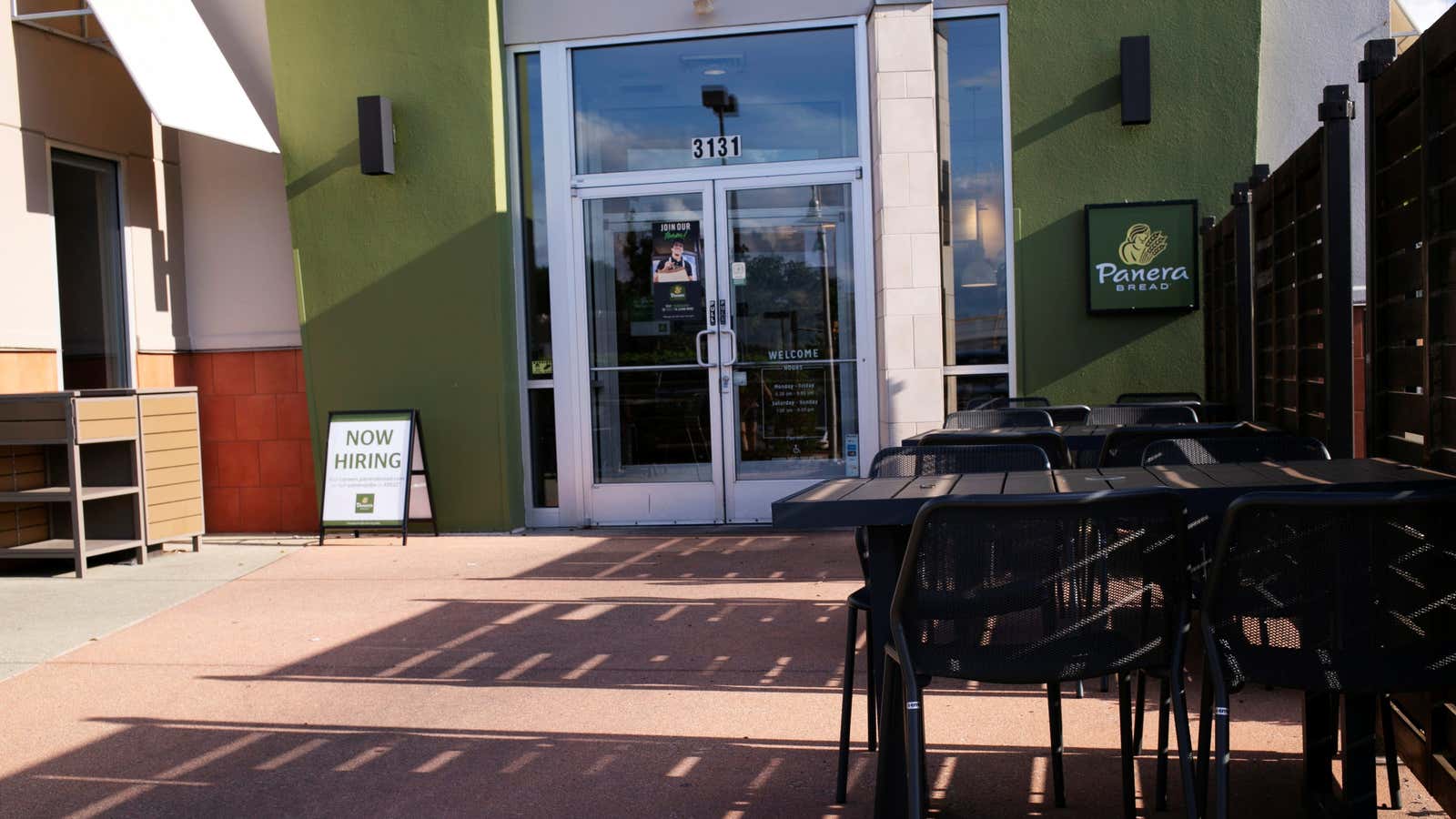Panera announced today that it is launching an unlimited beverage subscription for all self-serve drinks, a deal that arrives as food prices creep up. As pandemic restrictions continue to lift, Panera and other restaurants aim to lure more customers into stores with subscriptions for everything from lemonade to tacos.
Subscriptions are a way to build loyalty, which may be why so many restaurants have recently jumped into the subscription model. In February 2020, Panera launched unlimited coffee and tea for $8.99 a month, and the new subscription now expands that to 26 other beverage choices including soda and lemonade for $10.99 a month. The subscription pays for itself after four drinks, said the company.
In September of 2021, Taco Bell tested a 30-day taco subscription in Tucson, Arizona, with prices ranging from $5 to $10 a month, to drive more frequent visits. Pret A Manger also rolled out a monthly coffee subscription plan across the US last year.
What’s in it for restaurants?
Restaurants make more money from customers who dine in person than via delivery. Panera said that unlimited beverages could bring customers in during the later hours of lunch and dinner, when menu items tend to have higher prices than at breakfast.
The model could also help build consistent customers. Dining-in traffic continues to remain in flux, according to data from reservations site OpenTable, with covid-19 cases rising and falling across the US and workers still not commuting to the office as often as they once did.
Panera said that subscriptions attract diners who spend more than the average customer. If a customer makes the effort to go into the store, they are likely to buy something along with the drink, said Raghuram Iyengar, a professor of marketing at University of Pennsylvania’s Wharton School. At the same time, companies needs to be selective about what they offer via subscription if they want to make money. “If they start including food too, then it’s not clear where the margins are,” he said.
There’s psychology behind the subscription strategy, too. When customers pay a flat fee upfront like an unlimited public transportation subscription it feels like they’re getting something for free and encourages more usage, said George Lowenstein, an economist who studies consumer behavior at Carnegie Mellon University.
The cost of subscription models
A good deal can come at a price.
Lowenstein, who has done research on how our brain tries to come to terms with spending, said one concern is health oriented. “It’s very likely that it will induce even more overconsumption of sugary beverages than we already see,” he said. That may be at odds with Panera’s efforts to brand itself as a restaurant with healthier choices on the menu.
For now, subscriptions are a way for Panera to stand out, said Iyengar. But he added, the company needs to be ready for many competitors, too.
